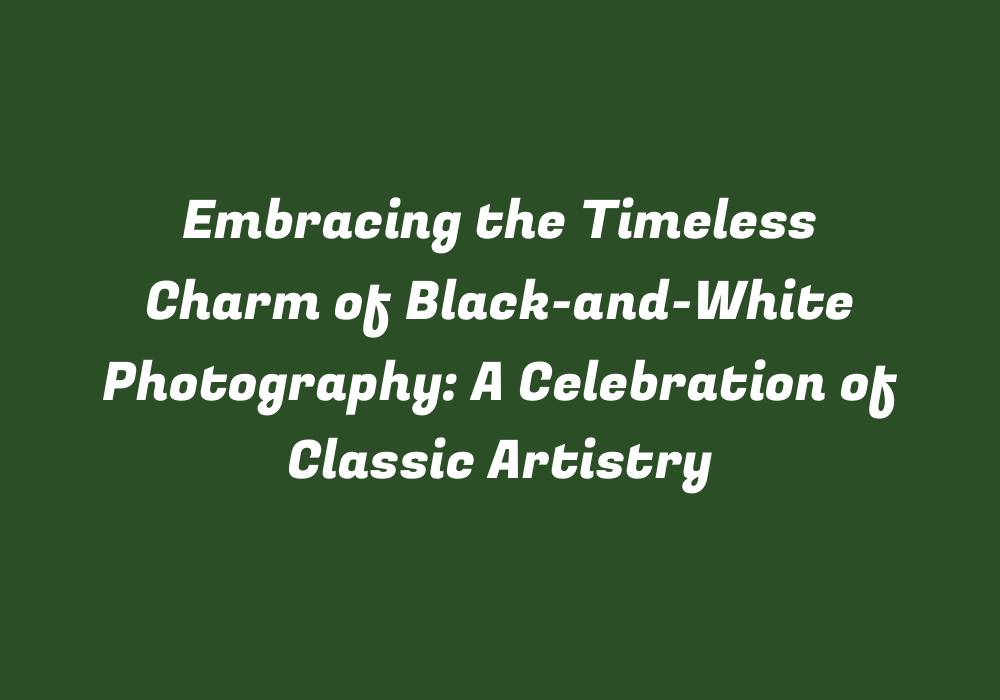Embracing the Timeless Charm of Black-and-White Photography
Black-and-white photography has a charm that transcends time, and it’s not surprising to find photographers in today’s world who are returning to its roots. With an endless supply of vibrant colors available through modern digital cameras, why is there still a fascination with this classic art form? The answer lies in the unique aesthetic appeal black-and-white images have on both the photographer and viewer.
A Pure Focus on Light, Shadow, and Tone
In contrast to color photography where hues dominate a scene, black-and-white images rely solely on light, shadow, and tonal values. This focus allows for an enhanced appreciation of textures and patterns in the image. As a result, the viewer’s attention is drawn towards essential elements such as shapes, forms, lines, and mood.
The absence of color also provides an opportunity to experiment with various lighting techniques, creating striking contrasts between light and shadow. By controlling exposure and utilizing reflective surfaces, photographers can achieve stunning results that highlight the subject’s form, texture, or emotion. The resulting photographs often evoke a sense of timelessness, drawing viewers into the scene in ways that color images cannot always accomplish.
A Timeless Appeal
Black-and-white photography holds an enduring appeal for many because it remains largely unaffected by the passing of time and changing trends. The lack of a date stamp or cultural context allows viewers to interpret these images in their own unique ways.
For instance, black-and-white photos of historic figures or events have a universal quality that can be easily understood by audiences across generations. This form of photography transcends cultural barriers, allowing us all to relate to and appreciate the human condition in its most basic form. The timelessness of these images creates an emotional connection that can span decades and even centuries.
A Meditative Experience
The process of capturing a perfect black-and-white image involves mindfulness, patience, and concentration. As photographers compose their shots and adjust settings, they are forced to slow down, focus on the task at hand, and savor each moment in their artistic pursuit. The very act of creating these images can be meditative, as it encourages the photographer to fully immerse themselves in their environment and appreciate the beauty in simplicity.
The Artistic Freedom of Black-and-White
While color photography adheres to a specific spectrum of visible light, black-and-white photography opens up a world of artistic possibilities, allowing photographers to express their unique vision without the constraints of realism. By manipulating contrasts and tones, photographers can create surreal or abstract compositions that push the boundaries of traditional photography.
This form of creative expression also gives photographers an opportunity to explore different genres and experiment with various techniques, such as infrared or night photography. In these instances, black-and-white images allow for a more fluid interpretation of reality while still retaining a sense of authenticity that color photography may not always achieve.
Embracing the Past to Create Something New
The resurgence of black-and-white photography is proof that even in today’s technologically advanced world, we crave a connection with the past and its artistic traditions. By blending elements from both analogue and digital photography, contemporary photographers can continue to create timeless art while pushing the boundaries of their craft.
As we celebrate this classic form of visual expression, let us also remember that it is through embracing our past and continuing to evolve that we can pave the way for a richer, more vibrant future in photography.
